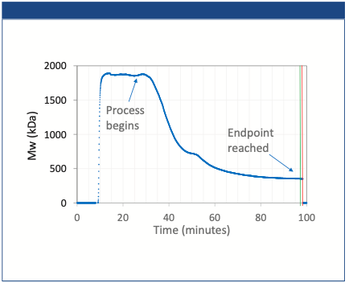
Characterization of Metal-Containing Nanoparticles in Tattoo Ink Using Asymmetrical Flow Field-Flow Fractionation Coupled with Multi-Angle Light Scattering and ICP-MS
In this study, AF4-MALS-ICP-MS was applied to characterize four commercial tattoo inks: outlining black, purple deep violet, green grasshopper, and blue ice.
Nowadays, tattoos have become increasingly popular with both men and women, and particularly with younger people. However, an increase in popularity has meant that more and more adverse effects, such as infections and allergies, have been reported. This is due to the fact that tattoo inks can be complex in their formulation, containing several out of more than 100 pigments and additives, and also a significant quantity of impurities. The pigments are normally of particularly low purity and a majority of the ingredients are not even approved for application in cosmetic products in the European Union. Despite this, harmonized and well-established analytical methods for the comprehensive characterization of tattoo ink ingredients are still lacking (1).
A powerful technology for the investigation of the particulate content in tattoo inks is asymmetrical flow field-flow fractionation (AF4) coupled with multi-angle light scattering (MALS) and inductively-coupled plasma mass spectrometry (ICP-MS) (2). In this study, AF4-MALS-ICP-MS was applied to characterize four commercial tattoo inks: outlining black, purple deep violet, green grasshopper, and blue ice.
Sizing of Particulate Tattoo Ink Ingredients Using AF4âMALS
Using AF4-MALS, the particle size distribution in all four investigated tattoo inks could be assessed and all were found to have a significant nanoparticulate content. While outlining black, green grasshopper, and blue ice revealed monomodal particle size distributions ranging from 30–350 nm, 35–550 nm, and 25–450 nm radii of gyration (Rg), respectively, deep purple violet showed a bimodal distribution with particle sizes ranging from
20–550 nm Rg (Figure 1).
Chemical Identification of Particulate Tattoo Ink Ingredients Using AF4-ICP-MS
By coupling to ICP-MS, AF4 enabled size-resolved chemical identification of particulate tattoo ink ingredients. By this means, it could be demonstrated that outlining black contains particulate titanium (Ti) and copper (Cu), but no aluminium (Al), while green grasshopper and blue ice contain all three elements in particulate form. Purple deep violet, however, contains particulate Ti and Al, but no Cu (Figure 2). All investigated metals were most likely present as pigments in their oxidic state as TiO2, Al2O3, and CuO.
Comparison of AF4-ICP-MS with Batch ICP-MS Results
By comparing the results obtained from AF4-ICP-MS with batch ICP-MS measurements, a quantitative differentiation between particulate and dissolved metals in the investigated tattoo inks could be achieved. While Al was predominantly dissolved, most of the Ti and Cu was present in particulate form (Table 1).
Conclusion
This study demonstrates the excellent suitability of AF4-MALS-ICP-MS for the comprehensive characterization of tattoo inks. Besides the particle size distributions obtained from the MALS data, ICP-MS also provides statements on the elemental distributions of various metals as a function of the respective particle sizes, offering valuable insight into the composition of the inks. This can not only facilitate the reliable identification and quantification of possible allergenic ingredients (and thus a better risk assessment) but may also help tattoo ink manufacturers to improve their formulations, eventually leading to safer products.
References
- P. Piccinini, S. Pakalin, L. Contor, I. Bianchi, and C. Senaldi, Safety of tattoos and permanent make-up (Final report, EUR 27947 EN), doi: 10.2788/011817.
- B. Bocca, E. Sabbioni, I. Micetic, A. Alimonti, and F. Petrucci, Journal of Analytical Atomic Spectrometry32, 616–628 (2018).
Postnova Analytics GmbH
Max-Planck-Strasse 14, 86899 Landsberg, Germany
Tel.: +49 8191 9856880 Fax: +49 8191 98568899
E-mail:
Newsletter
Join the global community of analytical scientists who trust LCGC for insights on the latest techniques, trends, and expert solutions in chromatography.


